Wildlife Photography Blog – Introducing photographer Olly Johnson
I’m Olly Johnson and amongst other things I am a wildlife photographer. I’ve been to Namibia and loved it, but since really getting into wildlife photography my main focus so far has been native wildlife in the UK and Europe. However, I’m off to South Africa later this month and am really looking forward to furthering my experience with Africa’s wildlife and scenery. In fact, many elements of wildlife photography are applicable no matter where you are, or what species you are photographing. As I’m completing a week’s work experience with Aardvark Safaris in the Hampshire office, I’ve been asked to share some examples of my wildlife photography and provide some wildlife photography tips for everyone to use on an African safari holiday.
First tip, get eye level, or lower! One of the biggest improvements I’ve made with my wildlife photography is to be eye level where possible. If your photos look down onto animals this can make them seem inferior and less powerful.
“Don’t be afraid to go even further and get down amongst the dirt, photographing up at the animal. Although from a safari vehicle this might not be possible!”- Olly Johnson
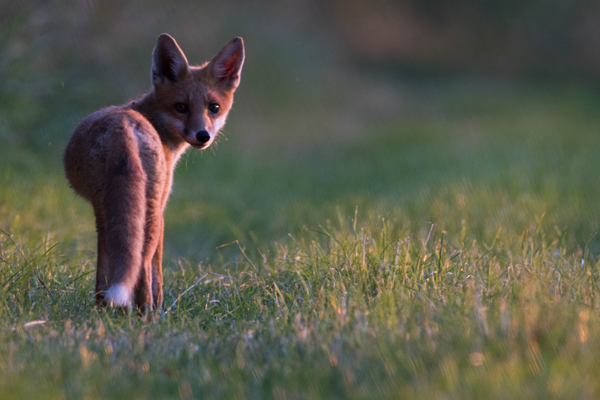
Juvenile fox (four months) in the evening light in Oxfordshire, UK © Olly Johnson
Continuing the theme of eyes, most of the time you will want to make sure the subject’s eye is sharp and in focus. As with humans, an animal’s eyes convey the most emotion and draw the viewer in. Consider using single point autofocus as this puts you in more control of selecting where the camera will focus.
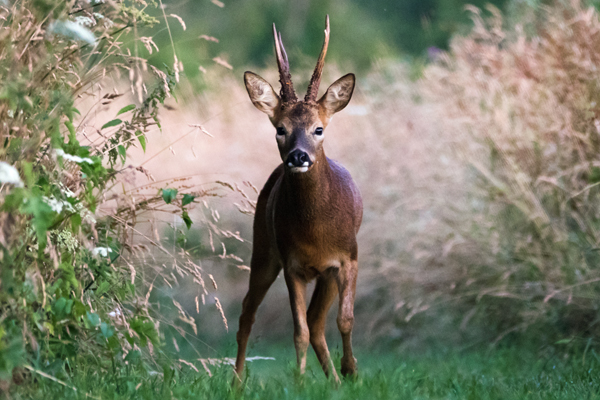
Roe stag after sunset, Oxfordshire, UK © Olly Johnson
Next up, capture a range of photos, by this I am referring to the focal distance of the animal. Sometimes it is nice to fill the frame with your subject or to zoom right in on certain features such as, an elephant’s eye or trunk or perhaps a zebra’s stripes. However, getting as close as possible should not always be the aim, often my favourite images are those where I have captured the animal in its wider environment. You may want to take into account the background and surroundings before choosing whether or not to fill the frame. This is because the surrounding environment can make or break a photo.
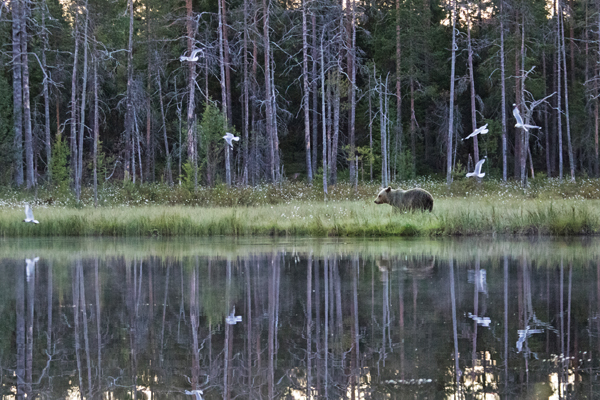
Brown bear reflection, Vartius, Finland © Olly Johnson
With all your photos it is important to consider the famous rule of thirds. This doesn’t always have to be done when you take the image, you can crop afterwards to place the subject into the left, right, top or bottom third of the frame. When capturing photographs try to make sure there is room for the animal to ‘move into’ so to speak. This applies when cropping your photos too, leave room on the side of the frame which the animal is looking, or moving, into otherwise it can look as though the animal is trapped in the frame.
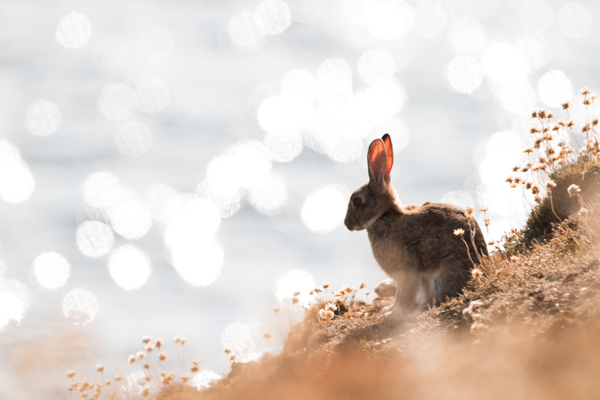
Rabbit on the cliffs at Pentire Point, Cornwall, UK © Olly Johnson
You may have heard of the ‘golden hours’ before, this is essentially early morning and late evening. Generally these are the times where you’ll get the nicest pictures so make sure you’re up early and stay out late! Not only is this when you get the nice soft golden light but this is also when the animals are most active.
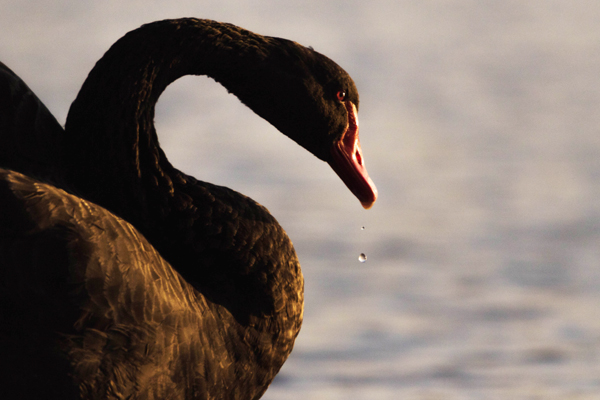
Black swan close up in the golden hour, Topsham, Devon, UK © Olly Johnson
My time in Namibia in 2015 was spent with the Namibian Dolphin Project in Walvis Bay. A few times a week we had very early starts getting out onto the water with the research boat. From here we scanned the glassy ocean for dolphins emerging. Upon spotting them we would record information about the direction they were going, their behaviour and the size of the pod. We also got the cameras out to capture photos which we later used for photo ID. Every dolphin’s dorsal fin is different and by looking at various rake marks and scars we were able to identify individuals and get a good idea of the population in the area.
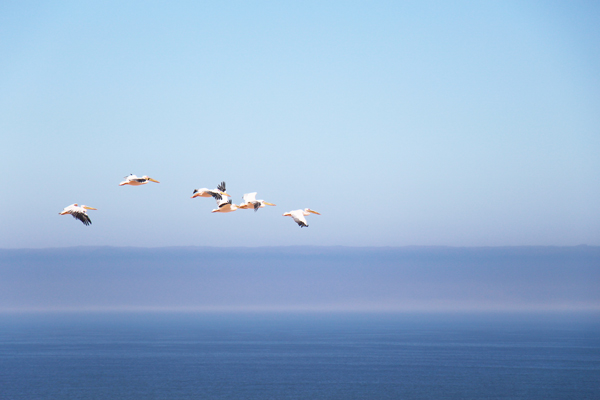
Great white pelicans, Sandwich Harbour, Namibia © Olly Johnson
Other tasks included a necropsy (an autopsy to discover the cause of death) on a young bottlenose dolphin which had been washed up, and gathering Sei whale bones from an old stranding to clean and then use in displays and for educational purposes. During my days off I was able to explore the area which included a 4×4 trip through the dunes, quad biking and dune boarding, and a ‘living desert tour’. This was the first month where I really found my passion for wildlife photography and I spent a lot of time practising with the basic equipment I had at that point.
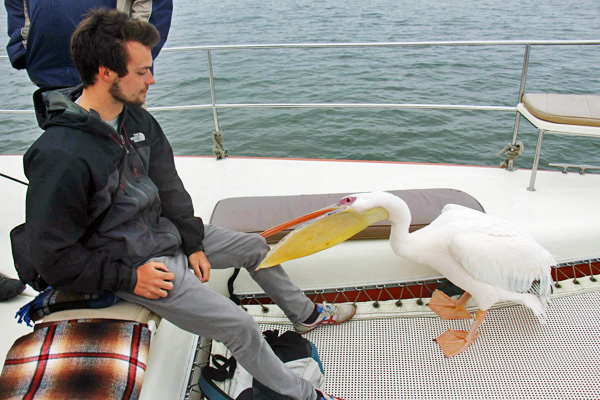
Getting a little too close to the wildlife with the Namibian Dolphin Project, Walvis Bay, Namibia
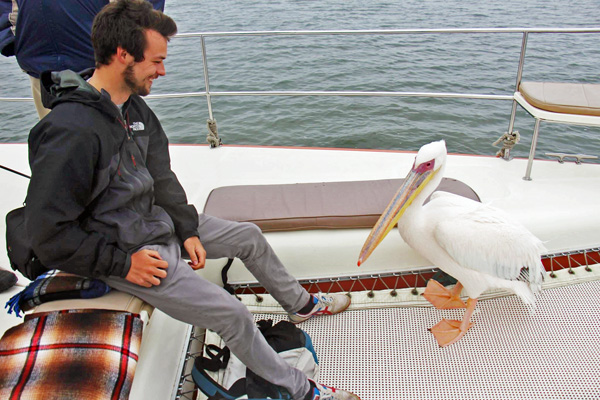
Enjoying the company of the locals, Namibian Dolphin Project, Walvis Bay, Namibia
With everything I have learnt about wildlife photography since being in Namibia in 2015, I am really excited to have the opportunity to be travelling to South Africa in September. I will be photographing wildlife off the coast of Hermanus and in Sabi Sands, I already have some images in mind but whether the wildlife cooperates during the time I am there is a different matter! Olly hopes to photograph whales at Hermanus (Whale Festival, 28-30 Sept 18)
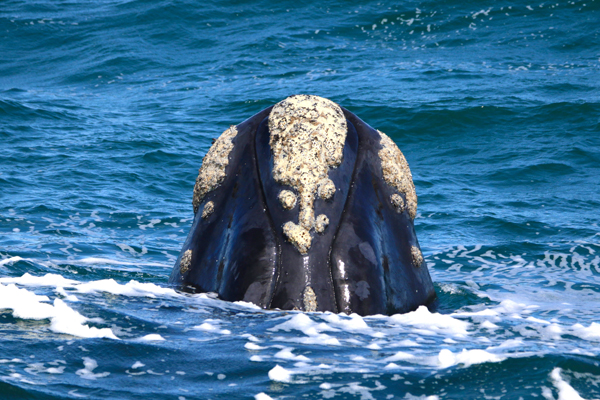
Southern right whale breaching, Hermanus, South Africa © Olly Johnson
Some examples of these include; Southern right whales breaching around the southern tip of the coastline; close ups of various elephant features as well as some nice landscape shots with elephants; a silhouetted leopard in or climbing a tree at sunset or sunrise; and finally, some photos of African wild dogs in nice golden light, I’m really fascinated by these animals. Of course I am also extremely excited about the possibility of seeing and photographing loads of other species including rhinos, lions, giraffes, hippos, African fish eagles and maybe even great white sharks to name a few.
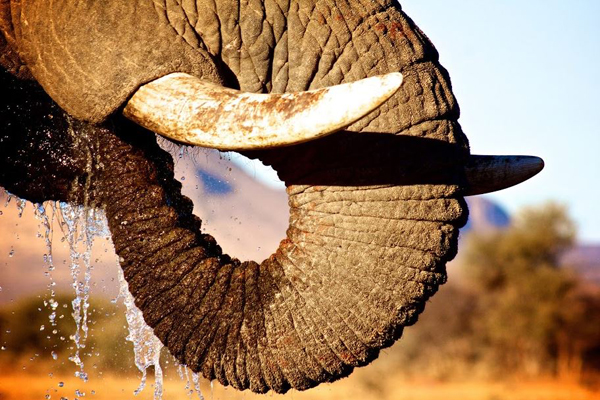
Elephant at Marataba Safari Lodge, The Waterberg, South Africa
Finally, get to know the settings on your camera and spend some time practising before getting out on safari. Most importantly, have fun and remember not to spend the whole time looking through your camera’s viewfinder!
What Next for Olly Johnson?
Olly is pursuing a career in travel and wildlife photography – follow him on Insta/ollyjohnson
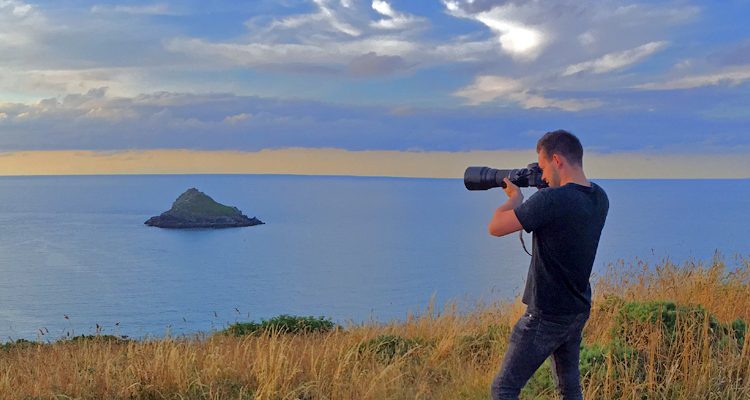
Leave a Reply